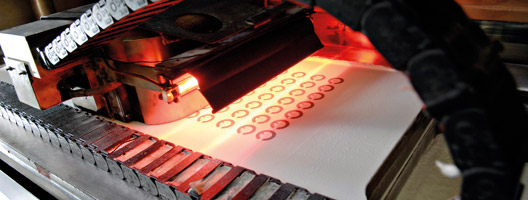
High-speed Sintering (HSS) is a 3D printing process that rapidly produces parts using powder material and infrared. The process was developed by FaraPack Polymers and researchers at Loughborough Univeristy in England.
How it WorksA roller assembly deposits a layer of powder on the print bed. Then the print heads jet bitmap images onto the bed using Radiation Absorbent Material (RAM). At the same time, the Infra-Red (IR) lamp exposes the entire print bed to IR energy, which causes the material to melt and fuse together. The unprinted areas in the print bed remain a powder. Another layer of powder is deposited and the process repeats until the part is complete.
HistoryFaraPack Polymers and researchers at Loughborough University developed the process, calling their 3D printer FACTUM (Latin: to make). This process is patented by Loughborough University. Neil Hopkinson, Professor at the Department of Mechanical Engineering of the University of Sheffield led the team.
"The HSS machine we've been using in this project to make parts is owned by Loughborough and loaned to Sheffield, as the research helps Loughborough to license the technology, while Sheffield secures funds to develop new technology," Hopkinson explained.
To learn more about the latest in 3D Printing, check out our 3D printing.
